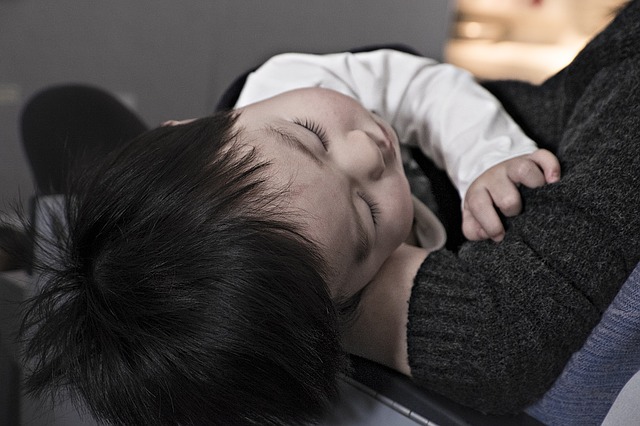
How Technology Affects Your Children’s Sleep
July 14, 2019Depending on their age, children require between eight and 14 hours of daily sleep, according to the National Sleep Foundation. However, these hours are frequently disrupted by using electronic devices before going to bed. As you can guess, the overuse of technology ends up truncating our regular hours of sleep.
In fact, 72% of kids and adolescents aged between six and 17 go to bed with at least one electronic device nearby. It is becoming increasingly common to see children surfing the internet, playing video games, or watching television until late hours at night.
Also Read: Should Parents Monitor Their Children’s Social Media?
How Technology Can Affect Your Kid
There are always two sides to technological advances – they come with blessings and curses. While your kids have a lot to learn from technology, an excessive and uncontrolled use of it can negatively affect their behavioral tendencies.
Some of the various ways technology can affect your children – both positively and negatively – are as follows:
- Development of cognitive abilities. Your kid has a lot to benefit from appropriate and controlled use of technology, especially when they are still under eight. The right exposure to technology helps them be ready for school, develop cognitive abilities, skills, and talents.
- Physical problems. Some young people experience contractures, eye irritation, and ocular inadequacy because they spend too much time in front of the screen.
- Weight problems. One of the leading causes of weight problems in young people is the lack of mobility and poor diet. The many hours that your kids spend with their electronic devices may cause them to remain immobile for hours. This may result in the infamous childhood obesity that could cause health complications at an early age.
- Emotional and socially deficient development. The excessive use of devices will undoubtedly be a trigger for a sedentary lifestyle. Being in contact exclusively with the digital world diminishes abilities to interact with other people and their ability to establish new relationships and interactions with other children. In the same way, their physical interaction will also be reduced.
- According to the WHO, one in every 11 children from six to 13 years old is addicted to new technologies. This can easily be identified if the electronic devices are withdrawn and they feel the need to continue using them, causing them to become violent or cry in protest.
- Lack of sleep and rest. One of the most significant and most harmful effects of technology on your kids is sleep disruption. Apart from going late to bed due to late night consumption of digital content, radiation from these devices have been proven to be the leading cause of sleep disorders such as insomnia.
A study published by JAMA Pediatrics has revealed that there is a direct relationship between the lack of rest and the use of electronic devices with bright screens (i.e. smartphones and tablets).
The JAMA study found that children and youth who had contact with smartphones or tablets at least half an hour before sleep were less likely to sleep at least nine hours during the night.
It also found that those who slept near their devices were 50% more likely to have little rest and have 200% chance of falling asleep during school hours.
Effects of Lack of Sleep on Children
The consequences of not sleeping enough due to late-night usage of digital gadgets and the disorders they cause to your kids are many. Some of these include:
- Not just in kids; lack of sleep affects everyone’s mood. After enduring insomnia or a short period of sleep during the night, one tends to be more short-tempered, stressed, and easily irascible.
- Memory loss. It has been proven over and over again that lack of sleep is the leading cause of memory loss. When your child sleeps well, everything they learned during the day goes from short-term memory to long-term memory.
- Poor growth. Growth hormone is released during the non-rapid eye movement (REM) sleep, which is known as quiescent sleep. This is the first sleep cycle that occurs approximately between 7 pm and 11 pm. If your kids are missing this period of sleep, they may have growth problems.
- Inability to deliver in school. It is difficult for them to concentrate, and their reactions are slower. Children who sleep well retain better learning and have a better level of response to problems.
- Weakened immune system. Sleeping well strengthens the immune system. If your child is one of those who often gets sick, check out how many hours they are sleeping. In fact, one of the ways to keep your kids healthy and happy is to ensure they’re getting enough sleep.
How to Tackle These Effects Using Technology
Ironically, technology can be deployed to tackle the problems created by the overuse or misuse of technology. Technological solutions which help to control human’s exposure to sleep disorder inducing lights and other hazards are now gathering momentum. Some of them include:
- Technological solutions to tackle circadian rhythm sleep disorders. Today, Circadian Optics and Swanwick Sleep Swannies are examples of technologies which help us control and give therapies against sleep-disrupting lights.
- Solutions to tackle insomnia. Good Night LED Bulb and Sleepio are also examples of technological solutions that help tackle insomnia. Sleepio works by firstly identifying your sleep problems and thereof creating efficient sleep routines. Originally developed for astronauts, Good Night LED Bulb increases melatonin production in its users, thereby giving them a restful sleep.
- Android’s Do Not Disturb Looking for a solution to sleep disorders caused by technology, Google also developed and launched in 2018 a new feature for smartphones called Wind Down Mode. Introduced in its latest Android 9.0 Pie OS, Wind Down mode is a do-not-disturb feature which detects sleep habits and changes the screen to black and white when the time to sleep approaches. see Infograpic Here
Conclusion
Technology is one of the leading causes of sleep disorders among children. Without proper control of your kids’ exposure to it, the resulting effects could be health problems such as obesity, depression, irritability, hyperactivity, increased appetite or poor dietary practices, problems related to mood, impairment of motor reactions, and memory deficits.
By paying attention to the time your children spend using electronic gadgets, you can find the best ways to balance this usage for the sake of their wellbeing.

